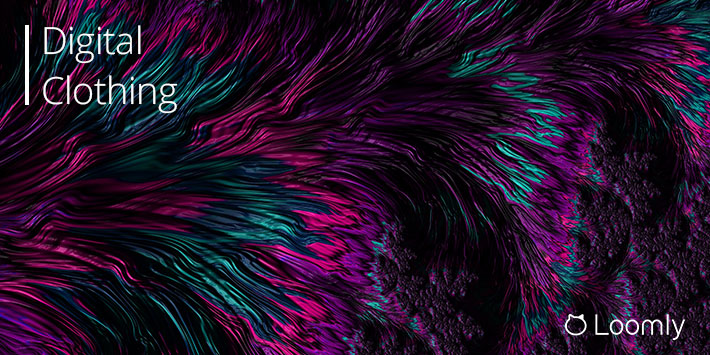Digital Clothing: All You Need to Know About the Future of Fashion Brands
Digital clothing is the latest fashion. Except it’s pixels, not textiles.
It’s not your stereotypical concept of catwalks, photographers, studios, and sample sizes. Instead, it flips fashion on its head with outlandish, gravity-defying designs that fit all sizes.
It’s still exclusive, but it’s also affordable.
Want to know more?
Read on as we dig into digital clothing to see why it’s booming and how your fashion brand can join the revolution.

Manage all your social media accounts in one place.
Craft, schedule, & auto-post content to all your social channels, then track analytics and manage interactions from a single, easy-to-use dashboard.
What is Digital Clothing?
Digital clothing isn’t made of fabric or anything tangible. The garments are made from pixels rather than textiles, using computer technologies and 3D software. So you’ll never wear an item of digital clothing in real life.
Instead, you can browse an online selection of digital clothes and order something you like. Depending on the retailer, you can either send a picture of yourself to a team of 3D designers who will digitally fit the item of clothing on your photo, or you can download and manipulate the files yourself using 3D software, so it’s ready to post on Instagram.
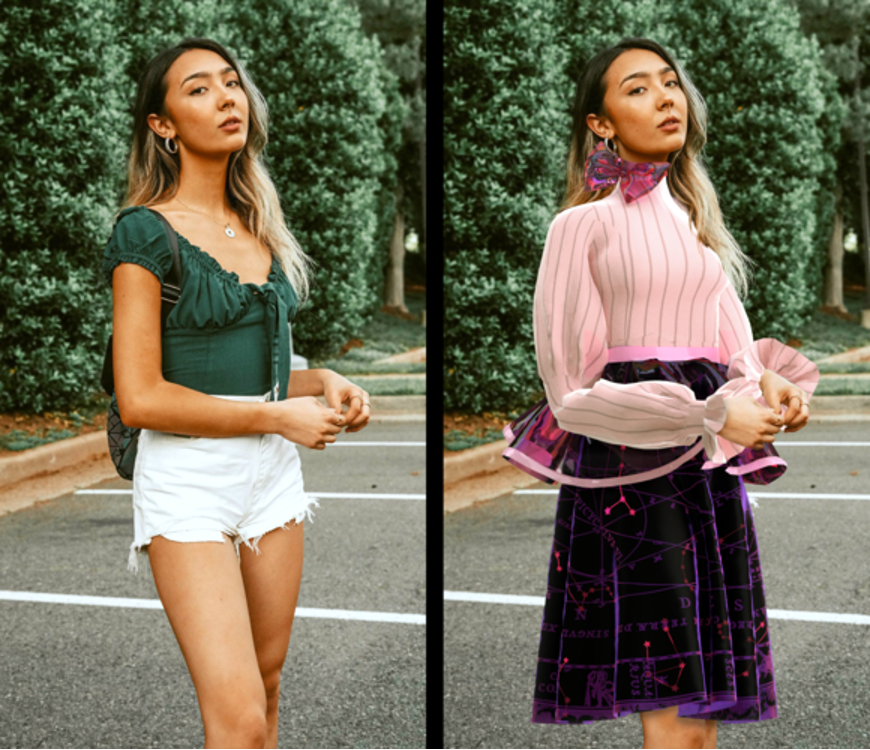
Credit: Wikipedia
Why Digital Clothing is Booming Now
Here are five reasons why digital clothing is booming:
1. Digital clothing is eco-friendly unlike the traditional fashion industry
Waste is an on-going issue in the fashion industry. It contributes more to climate change than the annual emissions of air and sea travel combined. If trends continue, it could account for a quarter of the world’s carbon budget by 2050.
Even if you recycle plastic bottles or produce organic cotton, there’s a lot more water used and it’s still more wasteful than digital.
Gala Marija Vrbanic, creative director at digital fashion brand Tribute, says:
“We truly believe this is something that is going to shape the future of fashion, and it’s something that is totally zero-waste.”
The carbon footprint of producing a digital garment is 95% lower than that of a standard physical garment.
2. Digital clothing is in line with current usage of people who need an “outfit of the day”
A quick search of the popular Instagram hashtag #ootd reveals more than 350 million posts. Many of the designer outfits cost thousands of dollars and will only be worn once, just to get that exclusive social media post, before they’re cast into the back of the wardrobe.
People want to look pixel-perfect in their outfits, especially in their social media photos. Writing in Vogue, Christian Allaire said:
“I am often guilty of scrutinizing my outfit in photos, and if the fit is only slightly off, I will delete said photo.”

3. Digital clothing is relevant in times of pandemic when people don’t go out as much and instead show off on social media
Digital clothing has seen accelerated growth through the pandemic. Brands have had to switch to virtual showrooms and online events to show their latest fashion designs. Even the models, like @lilmiquela, have become digital.
It makes sense. If people are trapped indoors there’s no need to buy real-life clothes to show off on social media. It’s more cost-effective to buy an exclusive, limited-edition virtual fashion item that can be modeled to fans and followers.
4. New tech making it easier to create digital clothing
Advances in technology, especially 3D software, is making it easier to create digital garments. What currently takes 3-5 hours could eventually become instant.
Initially, designers were digitizing their existing textile designs. But with the latest software they can create digital clothes from the start. They can even add imaginative items and materials that would be impossible in real-life, as well as adding AR effects and filters.
5. Digital clothing has a similarity with video games avatars
The inspiration for digital clothing brand Tribute, was Grand Theft Auto, The Sims, along with other video games.
“You have these characters and clothing shops where you can dress them up. That was always the most exciting part of the game for me.”
Similarly, Carlings’ first digital-only collection, “Neo-Ex”, was inspired by video games such as Tekken. It featured a bright yellow crocodile skin coat, blue latex chaps covered in computer code print, and a black visor emblazoned with the slogan: “Eat The Glitch’”
![]()
Credit: Carlings
Esports is a thriving market, as Matthew Drinkwater, head of the Fashion Innovation Agency at London College of Fashion told Elle:
“Fortnite fans rack up millions of dollars on skins for their avatars. And the fashion industry is only just beginning to realize that there might be an opportunity there for virtual content.”
Examples of Pioneering Brands in Digital Clothing
Let’s take a look at three pioneering brands who are leading the fashion industry towards digital clothing.
Tribute
Tribute is a Croatian-based company that makes “contactless cyber fashion.” It was founded by creative director, Gala Marija Vrbanic, and head of digital fashion, Filip Vajda.
Originally, Vrbanic and Vajda digitized their traditional real-life clothing patterns using 3D software. Nowadays, they are a 100% digital brand.
Their digital clothes are made from materials that people could never wear in the real world due to the laws of physics.
Customers purchase garments from their website and supply a photo. Then the Tribute designers blend the digital garment onto the image seamlessly, and add shadowing and other lifelike elements.
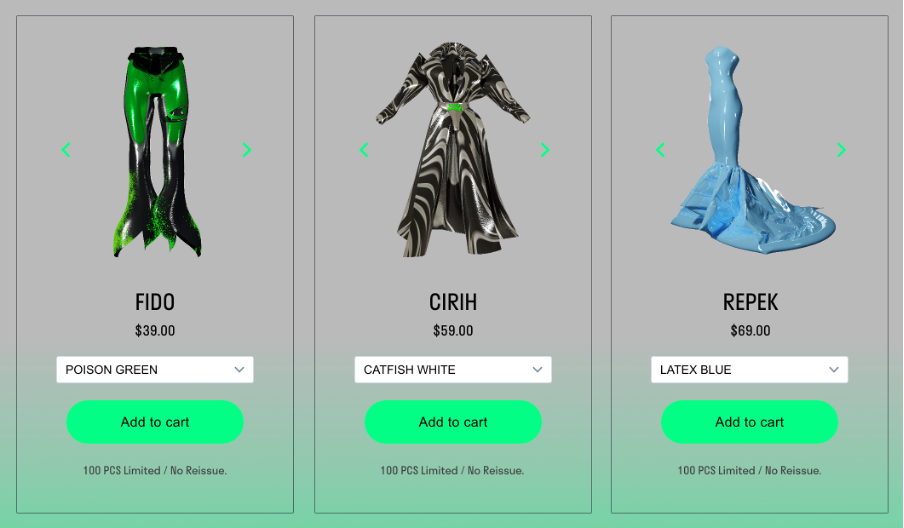
For example, you could buy the FIDO poison green pants, upload your photo, and appear something like this:
The Fabricant
The Fabricant is an Amsterdam-based digital fashion house “leading the fashion industry towards a new sector of digital clothing.” The brand creates hyper-real virtual clothing for fashion brands and retailers, such as Puma and I.T Hong Kong, Their founder, Kerry Murphy, reckons it won’t be long until a luxury brand releases a completely digital collection.
The Fabricant also designed the world’s first piece of “digital couture” sold at a charity auction for $9,500 on the Ethereum blockchain. The iridescent, translucent one-piece was designed by Amber Jae Slooten, creative director at The Fabricant, to be fitted onto a photo of the owner.
- Original design:
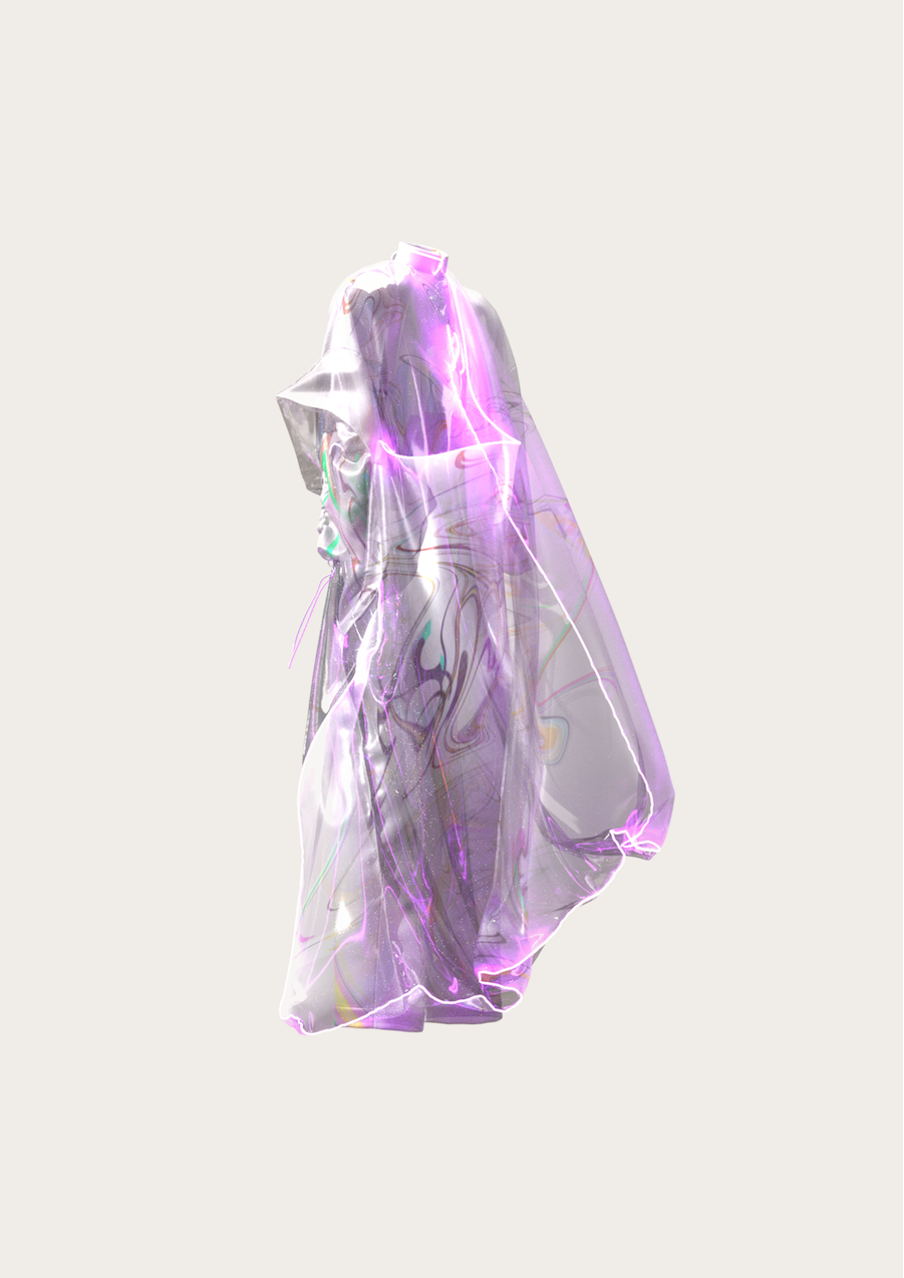
- It was modelled by Johanna Jaskowska @johwska:
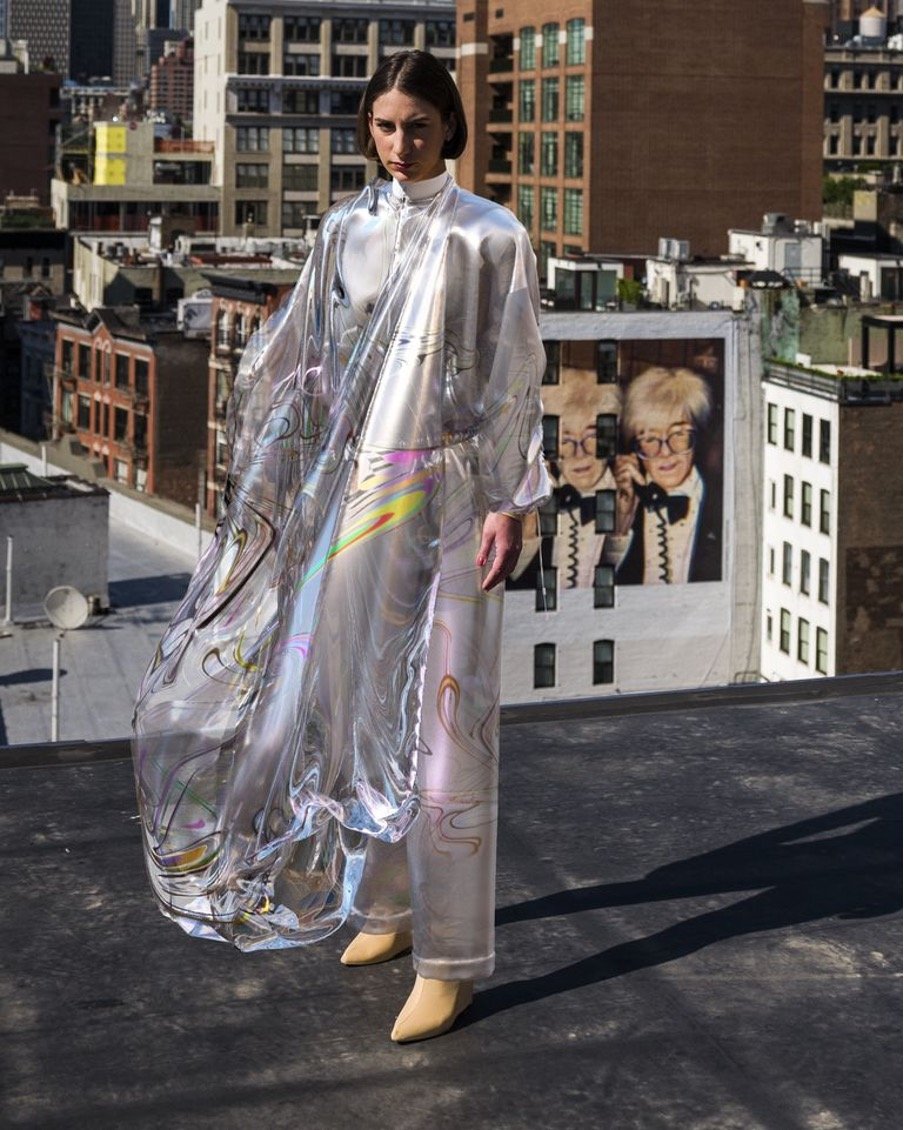
- And purchased by this lady in the auction:
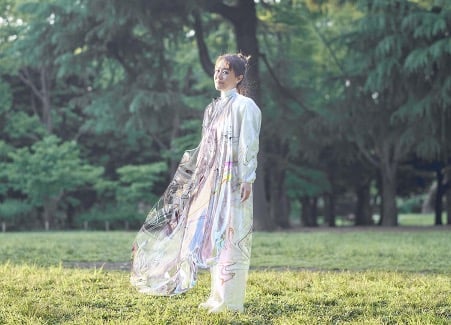
The Fabricant also sells digital clothing direct to customers from its online shop, including FFROPS (free file drops), which are free to download for anyone who wants to use these files, like SOORTY, for their own creations.
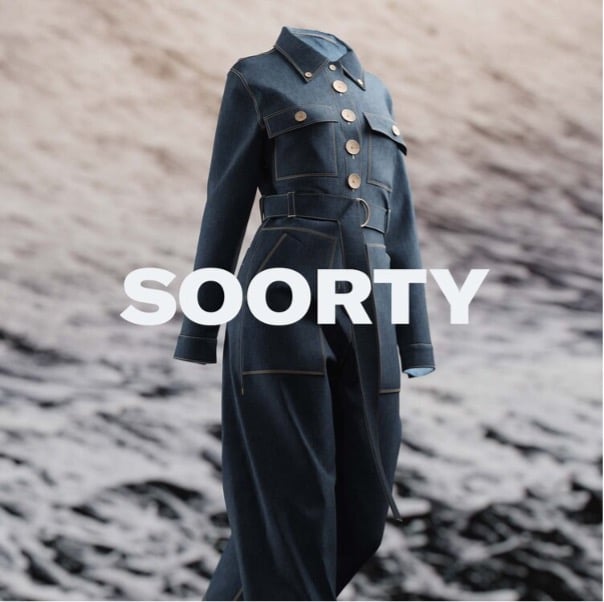
Unlike Tribute, The Fabricant customers need to “fit” the garments to their own photos using 3D software like CLO3D, Marvelous Designer, Blender, Maya, Houdini, Cinema4D or any other industry standard 3D software.
Happy99
Happy99 has a different digital-clothing strategy. Founders Nathalie Nguyen and Dominic Lopez, are not interested in editing Instagram photos for customers.
They see wearable AI as a tool to help build brand identity and ultimately open up a dialogue about what to consume. They’re famous for merging their digital shoes with physical outfits to create a stronger connection with fans and customers.
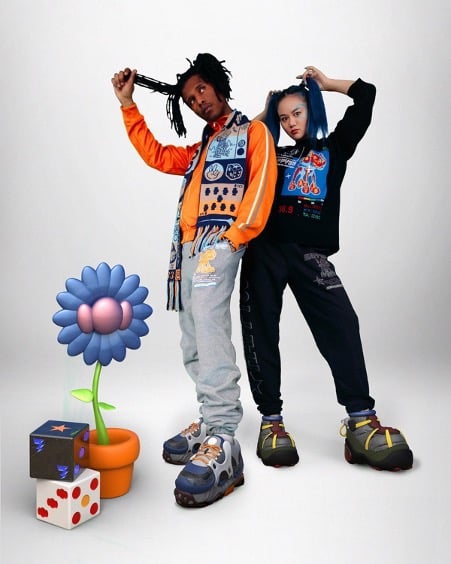
“In terms of brand identity, I think that narrative storytelling is the most sustainable option. We want to create a universe instead of just products and, at the end of the day, that makes all of our shoes ‘real’,” Nathalie explains. “Are they physical, consumable products? No. But in the same way that people like a picture, engage with it, comment on it, and share it with their friends, they have consumed the product.”
How Your Fashion Brand Can Ride into the Future with Digital Clothing
Here are four ways your fashion brand can harness the power of digital clothing.
Idea 1: Limited editions
The first idea is to follow the examples of The Fabricant and Tribute and offer limited editions of digital clothing that customers can purchase and download. Restricting items to limited numbers keeps the garments exclusive rather than mass produced.
It’s fair to say that from the consumer side, technology is “getting there” at the moment.
As Matthew Drinkwater says:
“As technology improves and the photo-realism of what you can create gets better, you start getting to the possibility where the desirability of digital clothing could become on a par with the real thing.”
But as the digital fashion trend grows, technology will become more mainstream and make it easier for consumers to manipulate their digital garments.
For example, you only have to look back at how 3D printing has now been democratized with desktop-size printers after previously being restricted to heavy industry.
Idea 2: Social tokens
A second idea is to link the concept of digital clothing to another topic we discussed recently on the blog: social tokens.
Non-fungible tokens (NFTs) allow creators, such as designers, photographers, musicians, and authors, to monetize their creations with their fans.
NFTs are blockchain-based records that uniquely represent pieces of media. The media can be anything digital, including art, videos, music, and text.
RTFKT Studios manufactures virtual collector’s sneakers in NFT format:
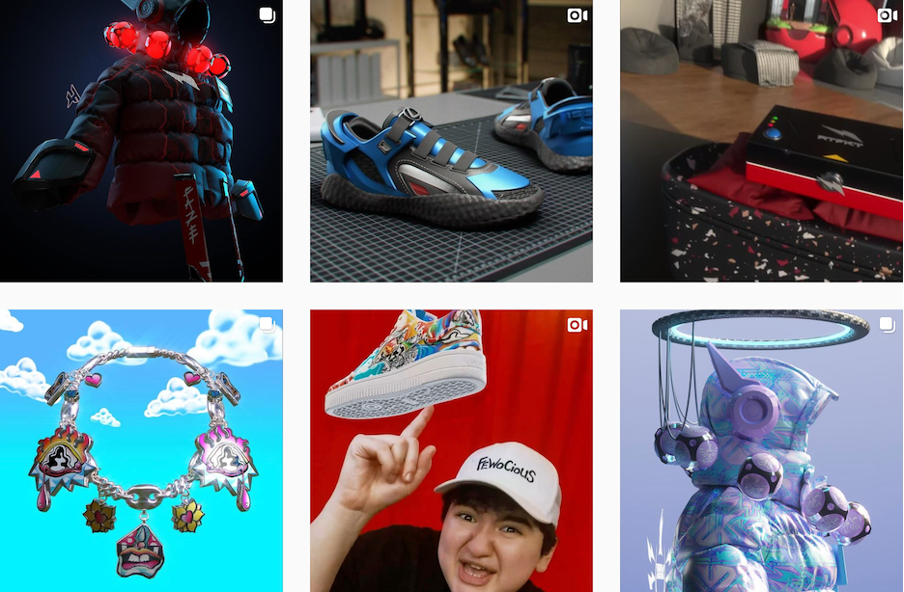
Recently, their FEWO sneakers sold out in 7mins and generated $3.1 Million:
we just made sneaker history with @fewocious and @RTFKTstudios … I can’t breath…… https://t.co/NjDwNMZsgz
— ClegFX RTFKT (@clegfx) February 27, 2021
There’s definitely a market for NFTs, so you could consider selling other fashion accessories like hats or sunglasses. You could also take this one step further and include items of digital clothing, designed by brands and endorsed by celebrities and influencers.
Idea 3: Esports fashion
Finally, you could head down a different path, conceptually, and branch out into esports fashion.
Some brands are already creating digital clothing for video games.
For example: Louis Vuitton created an unprecedented, one-of-a-kind Trophy Travel Case to hold the Summoner’s Cup, the trophy awarded to the world champions. They also designed unique champion skins for Qiyana (a character from the game) and a capsule collection, along with other League of Legend digital assets.
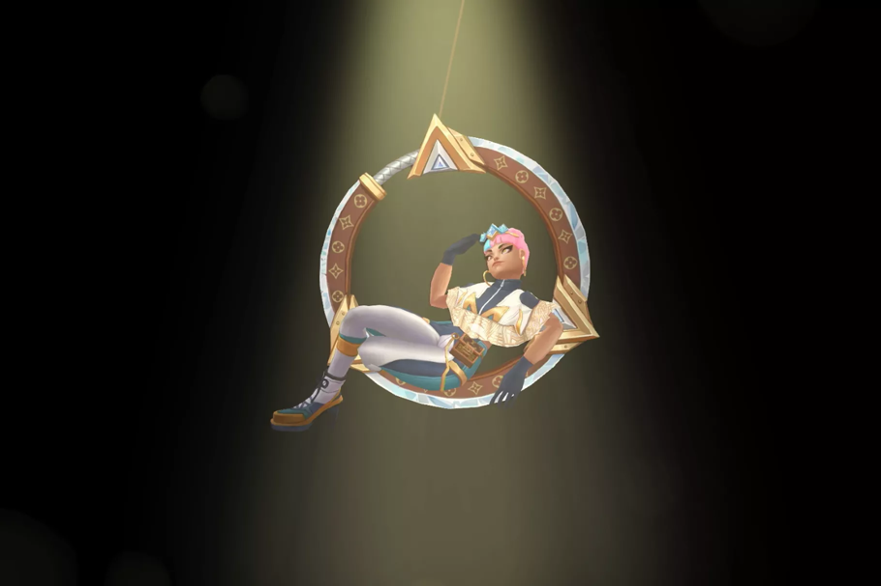
To unlock this exclusive skin, League of Legends fans had to buy the 2019 Worlds Pass for around $10. From there, players had to grind out games to earn tokens to buy the skin from an in-game shop. The skins cost about 2,000 tokens.
Although this is slightly “left field”, in the sense that it’s not clothing that you apply to a human photo and post on social media, but a skin you apply to a video game avatar, it’s still a viable market.
In 2018, Glu Mobile’s ‘Covet Fashion’ game, which allows users to style models with digitally rendered designer clothing, generated $53.4 million.
However, it’s still digital wear that you can exclusively use in an online world, and ultimately help your brand build awareness and drive revenue, as esports fans spend millions of dollars on skins for their avatars.
Idea 4: Offer digital fitting solutions
Right now, there’s an opportunity to develop more user-friendly tech, like 3D software and analytics tools.
For example, Whering is an app that can digitize your wardrobe:

“The app that’s gonna change your outfit game in 2020. Seamlessly browse, style, and organise your clothes. Save time, money, and regain confidence.”
The concept is to get people to wear their clothes more rather than dumping them in the wardrobe. “On average a garment in the UK is worn just 4 times.”
Once you’ve digitized your wardrobe, the app prompts different combinations of outfits to wear, and in so doing, help reduce your carbon footprint.
This is just one type of app – there are more opportunities throughout the digital clothing chain, from design and production to ecommerce to eco-friendly initiatives.
Digital Clothing in a Nutshell
Boosted by broader supply (more brands joining the movement) and demand (more people staying home while hanging on social media), 2021 could be the year digital clothing blooms into a new fashion avenue.
At the same time, digital fashion is more accessible and can rest easy knowing it hasn’t left an enormous, negative carbon footprint like the traditional fashion industry.
To summarize, digital clothing is eco-friendly, is getting easier to create, fits in with the trendy OOTD, allows people to show off on social media, and is closely aligned with the thriving esports market.
